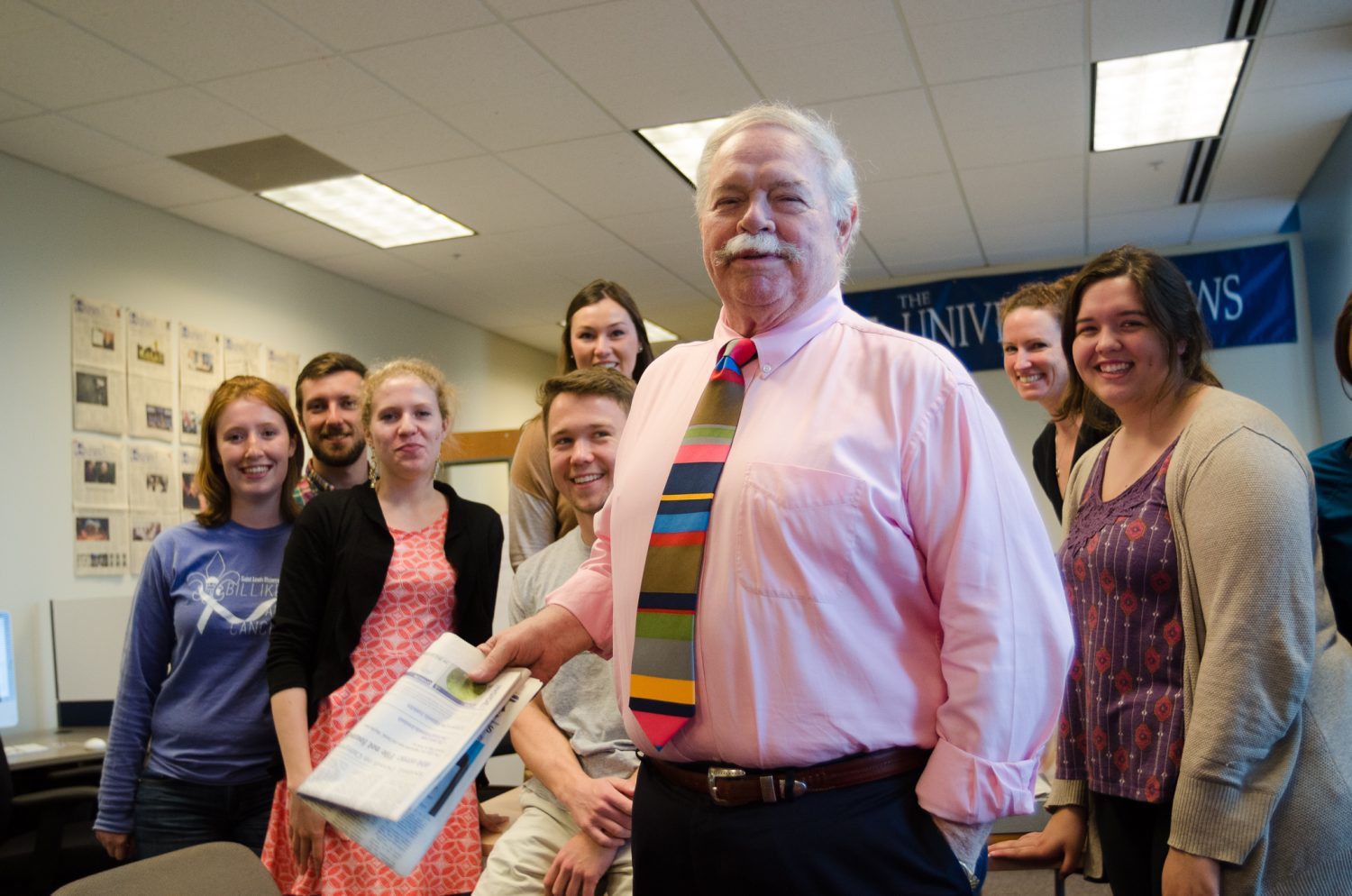Saint Louis University is getting a little taste of off-Broadway. The SLU Theatre is performing its adaptation of Godspell, the 1970s musical that retells the last days of Jesus Christ. Godspell was written by John-Michael Tebelek and translated to stage by Stephen Schwartz. SLU Theatre’s version of the play gives the set and costumes a modern makeover.
Director Greg Horton added a hip-hop theme and modern set for Jesus and his posse.
The first act of the play musically follows Jesus throughout his ministry. Instead of a narrative approach to Christ’s final three years, the audience gets a play-by-play recreation of parables lifted straight from the gospels.
The second act retells Christ’s betrayal and Passion. Starting with the Last Supper and ending with His crucifixion, the performance rounds out at two and a half hours.
Not having seen the ’70s version of Godspell, it is difficult to say how it compares to the original, but the hip-hop version of Godspell leaves one hesitant to search out the original.
The SLU Theatre adaptation comes off with a lack of clear vision. This version intends to portray an edgy street theme, but is accompanied by a four piece live band. The band doesn’t seem to have all the components necessary for a hip-hop score.
The costumes are distracting at times, with Jesus wearing a muscle shirt and other characters donning flashier colors.
However, the set is simple enough, with graffiti-scribbled walls, scaffolding and steel drums lying around to give the play some street credibility.
Street euphemisms and other slang are mixed in with the original lines from the play, but the result is more laughable than believable.
The cast is a shining exception in the midst of this gospel faux pas. Eric Yoder plays Jesus with a wonderful voice and is a convincingly compassionate savior.
A few line mishaps were the only things that slowed this actor’s first lead role.
Jim Hood excels in the duel role of the everyman John the Baptist/Judas. He switches easily from beheaded prophet to Jesus’ betrayer, and his singing compliments his enthusiasm.
Another character to note is Sonia, played by Amy Pennell; her deep, seductive voice matches with an equally engaging costume that makes her character an eye catcher, as well.
The rest of the cast adds energy to each parable with inspired singing and dancing performances. However, presentation onstage hinders the representation of each character as a distinct person to whom the audience can relate.
All the characters-with the exception of Jesus-jump around so much (from narration to parables, from acting the part of a friend, then a foe) that they become faceless.
Jesus’ heartfelt goodbyes at the Last Supper to each one of his disciples is a useless gesture because the audience never gets to know the characters.
In fact, this seems to be the play’s greatest weakness: lack of character identity creates a faceless plot.
The play comes off as less of a story with an over-arching theme, a collection of street tales among friends, and no one in the crowd seems to be in on the joke.





